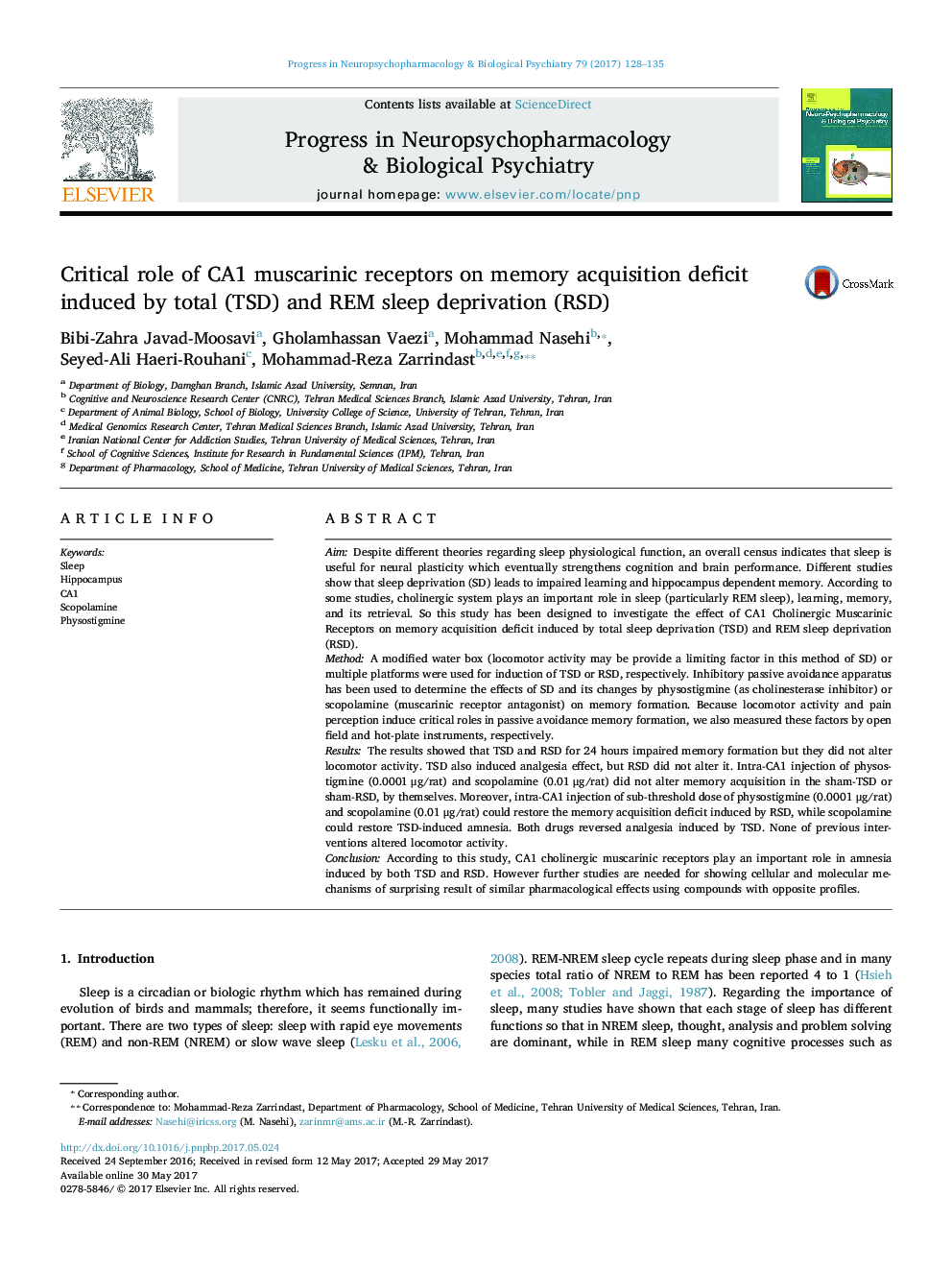| Article ID | Journal | Published Year | Pages | File Type |
|---|---|---|---|---|
| 5557914 | Progress in Neuro-Psychopharmacology and Biological Psychiatry | 2017 | 8 Pages |
â¢TSD and RSD impaired memory acquisition but they did not alter locomotion.â¢The TSD but not RSD also induced analgesia effect.â¢Intra-CA1 injection of physostigmine and scopolamine restored RSD-induced amnesia.â¢Intra-CA1 injection of Physostigmine restored TSD-induced amnesia.â¢Both drugs reversed analgesia induced by TSD.
AimDespite different theories regarding sleep physiological function, an overall census indicates that sleep is useful for neural plasticity which eventually strengthens cognition and brain performance. Different studies show that sleep deprivation (SD) leads to impaired learning and hippocampus dependent memory. According to some studies, cholinergic system plays an important role in sleep (particularly REM sleep), learning, memory, and its retrieval. So this study has been designed to investigate the effect of CA1 Cholinergic Muscarinic Receptors on memory acquisition deficit induced by total sleep deprivation (TSD) and REM sleep deprivation (RSD).MethodA modified water box (locomotor activity may be provide a limiting factor in this method of SD) or multiple platforms were used for induction of TSD or RSD, respectively. Inhibitory passive avoidance apparatus has been used to determine the effects of SD and its changes by physostigmine (as cholinesterase inhibitor) or scopolamine (muscarinic receptor antagonist) on memory formation. Because locomotor activity and pain perception induce critical roles in passive avoidance memory formation, we also measured these factors by open field and hot-plate instruments, respectively.ResultsThe results showed that TSD and RSD for 24 hours impaired memory formation but they did not alter locomotor activity. TSD also induced analgesia effect, but RSD did not alter it. Intra-CA1 injection of physostigmine (0.0001 μg/rat) and scopolamine (0.01 μg/rat) did not alter memory acquisition in the sham-TSD or sham-RSD, by themselves. Moreover, intra-CA1 injection of sub-threshold dose of physostigmine (0.0001 μg/rat) and scopolamine (0.01 μg/rat) could restore the memory acquisition deficit induced by RSD, while scopolamine could restore TSD-induced amnesia. Both drugs reversed analgesia induced by TSD. None of previous interventions altered locomotor activity.ConclusionAccording to this study, CA1 cholinergic muscarinic receptors play an important role in amnesia induced by both TSD and RSD. However further studies are needed for showing cellular and molecular mechanisms of surprising result of similar pharmacological effects using compounds with opposite profiles.
